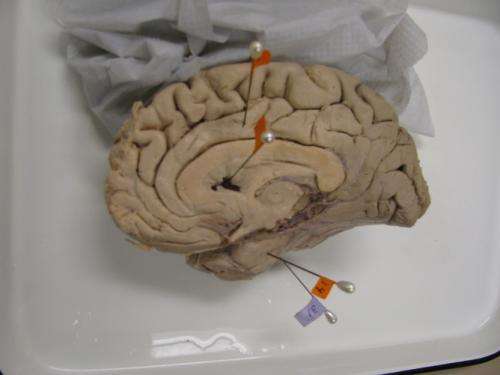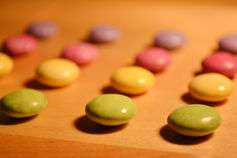The brain's function in perseverance

Perseverance is a quality that plays a large role in the success or failure of many pursuits. It has never been entirely clear why this trait seems more apparent in some people than others, but a new piece of research may at least help explain where it comes from.
The study, published in Neuron today, detailed the effects of brain stimulation on a pair of epilepsy patients and shows insights into the neurological basis behind the human will to persevere.
The research team, led by Josef Parvizi at Stanford University, found stimulating part of the anterior cingulate cortex, an area of the brain commonly associated with emotion and decision making, produced a feeling of anxiety in each of the subjects – combined with a strong willingness to overcome it.
One patient described the sensation as akin to finding out that a car tyre was half-flat at the midpoint of a trip but knowing the only option was to continue going forward. The other described a feeling of worry accompanied by a determination not to give up.
Along with these self-reported responses, patients' heart rates increased. Stimulation of nearby areas of the brain, on the other hand, produced no discernible effects.
The results indicate that this section within the anterior midcingulate cortex plays a significant role in our ability to persevere through difficult situations. As such, there is reason to think there might be therapeutic value in not only developing a better understanding of the cortex area's function, but finding effective means of manipulating it.
Amy Reichelt, postdoctoral research fellow at the University of New South Wales, explained the significance of this area of the brain.

"The cingulate is important in judging effort of carrying out actions based on their value, and also monitoring for conflicting behaviours," she said.
Damage to this area, Dr Reichelt noted, is often accompanied by more impulsive and socially inappropriate behaviour, particularly in sufferers of frontotemporal dementia. So there is reason to believe that this kind of brain stimulation might be useful in "controlling a compulsive ritualistic behaviour".
The study's authors suggest a link to treatment of neuropsychiatric conditions. They acknowledge that cingulate surgery in obsessive-compulsive disorder cases tends to produce variable results. But they say that a more specific, individualised approach—as exemplified in this study—may be more successful.
According to Associate Professor Parvizi's team, a more detailed understanding of the cortex's function might aid in various forms of treatment, particularly for patients with conditions which limit their ability to persevere through periods of distress.
It is unlikely, however, that electronic stimulation will be applied as part of regular therapeutic practice in the near future. Wayne Hall, Deputy Director of the University of Queensland's Centre for Clinical Research, pointed out some of the more significant barriers to further research.
"As the authors say, electrode implants in this region are not common and it would be difficult to justify such an invasive procedure to simply satisfy scientific curiosity.

"The best prospect of application may come from trials of implanted electrodes in patients with intractable obsessive-compulsive disorder who are being assessed to undergo ablative surgery."
Such a course, Professor Hall suggested, might be comparable to the implantable stimulation devices currently used to treat Parkinson's. He noted, however, that it might take the better part of a decade for satisfactory trials in the area to be completed.
Dr Reichelt agreed with Professor Hall's cautious analysis, saying surgery poses many difficulties.
"The patient must be kept conscious during the procedure to ensure that other important brain regions are not damaged," she said, also pointing to the necessity of the procedure being conducted by highly skilled neurosurgeons.
Associate Professor Parvizi, however, suggests that direct stimulation is only one possible treatment option. Medication and behavioural therapy are less invasive alternatives that might also be helped by a greater understanding of this phenomenon.
More information: The Will to Persevere Induced by Electrical Stimulation of the Human Cingulate Gyrus." Josef Parvizi, Vinitha Rangarajan, William R. Shirer, Nikita Desai, Michael D. Greicius Neuron, 05 December 2013. DOI: 10.1016/j.neuron.2013.10.057
This story is published courtesy of The Conversation (under Creative Commons-Attribution/No derivatives).
![]()
















